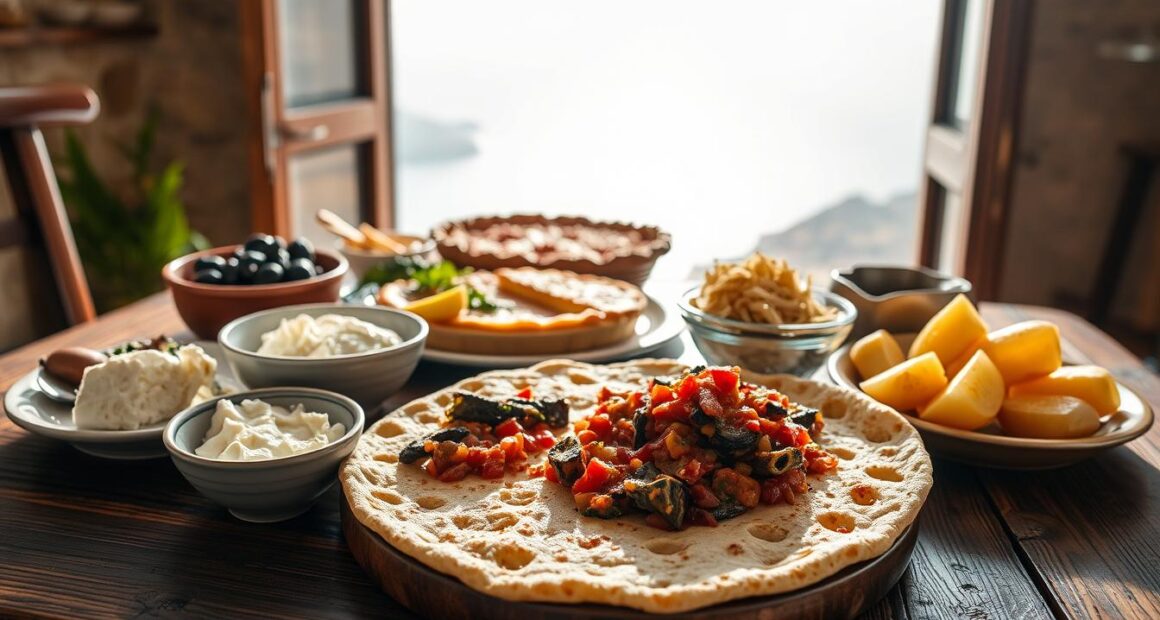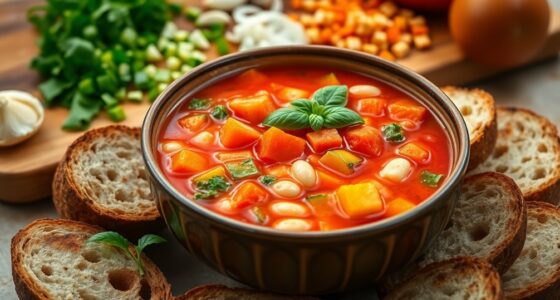Imagine stepping into a sun-kissed kitchen in Malta, the air filled with the warm, inviting aromas of simmering spices and fresh ingredients. Each dish tells a story, a narrative woven through centuries of history, culture, and the simple joy of gathering around a table with loved ones. Maltese cuisine is not just about food; it’s about connection, tradition, and the comforting embrace of flavors that echo the island’s rich past.
From the flaky layers of pastizzi enjoyed during a bustling day to the heartwarming rabbit stew shared on cozy family nights, every bite connects you to Malta’s vibrant culinary tapestry. Join us as we embark on a sensory journey through the traditional maltese dishes you simply cannot miss. This guide will lead you toward unforgettable tastes that celebrate maltese food in all its glory.
Let the flavors of Malta captivate your senses and inspire your journey to savor all that this beautiful island has to offer.
Key Takeaways
- Maltese cuisine is rich in flavors and steeped in history, influenced by various cultures.
- Pastizzi, a flaky pastry, is a must-try and widely enjoyed as street food.
- Rabbit stew (Stuffat tal-Fenek) holds a special place as Malta’s national dish.
- Seafood, particularly lampuki, is central to Maltese menus during seasonal events.
- Kinnie, Malta’s national soft drink, offers a unique taste reflective of the island’s heritage.
Introduction to Maltese Cuisine
Maltese gastronomy is a delightful fusion stemming from the island’s rich history and diverse cultural influences. When exploring Malta culinary traditions, you’ll find an array of flavors shaped by Arabic, Italian, French, and British cuisines. The unique combination of these elements results in dishes that are comforting, hearty, and often simple, reflecting the essence of what many refer to as “Cucina Povera.” This traditional cooking approach thrives on affordable ingredients, emphasizing regional produce and seafood.
What Makes Maltese Cuisine Unique?
One of the standout features of Maltese cuisine is its reliance on fish and seafood, particularly Lampuki, a fish available from late summer to winter. Bigilla, a thick paste made from beans, garlic, and herbs, serves as a beloved dip commonly paired with water crackers. Another notable item is Ġbejniet, a traditional cheese that can be crafted from sheep’s or goat’s milk, available in varieties like young, matured, and spiced. Pastizzi, small pastries often stuffed with ricotta or peas, have gained immense popularity, making them a staple of street food culture.
Historical Influences on Maltese Food
The diverse influences on Maltese cuisine stem from Malta’s strategic location in the Mediterranean. This geography has enabled the island to serve as a crossroads for various culinary practices over centuries. Rabbit, regarded as a local delicacy, takes center stage in traditional dishes, with rabbit stew being one of the most celebrated choices. The popular sandwich Ħobż biż-Żejt showcases Malta’s agricultural bounty, featuring ingredients such as olive oil, tomato paste, and tuna. Desserts like Imqaret, filled with dates, and Kinnie, a refreshing soft drink, reflect Malta’s vibrant food scene. Each bite tells a story of the island’s rich heritage and culinary evolution.

Traditional Maltese Dishes You Can’t Miss
Maltese cuisine offers a rich tapestry of flavors, deeply rooted in tradition. The island’s culinary delights are often a blend of various historical influences. Among the traditional maltese dishes, two stand out for their popularity and cultural significance: Rabbit Stew and Pastizzi. Both dishes highlight the use of local ingredients and encapsulate the essence of Malta recipes that have been cherished over generations.
Rabbit Stew (Fenkata)
Rabbit Stew, known as Fenkata, serves as Malta’s national dish. This hearty meal involves slow-cooking rabbit in a flavorful combination of tomato, red wine, and garlic. The result is a tender and aromatic stew, ideal for family gatherings and social occasions. Many Maltese families cherish Fenkata, often serving it alongside traditional sides like fresh vegetables or pasta.
Pastizzi: A Flaky Pastry Delight
Another beloved dish is Pastizzi, a flaky pastry filled with ricotta cheese or mushy peas. Found in pastizzi shops throughout Malta, these pastries provide an accessible and delicious snack for both locals and visitors. Pastizzi encapsulate the island’s culinary heritage and offer a quick way to experience the flavors of Malta. Whether enjoyed as a midday treat or paired with a drink, Pastizzi are a must-try when exploring traditional maltese dishes.
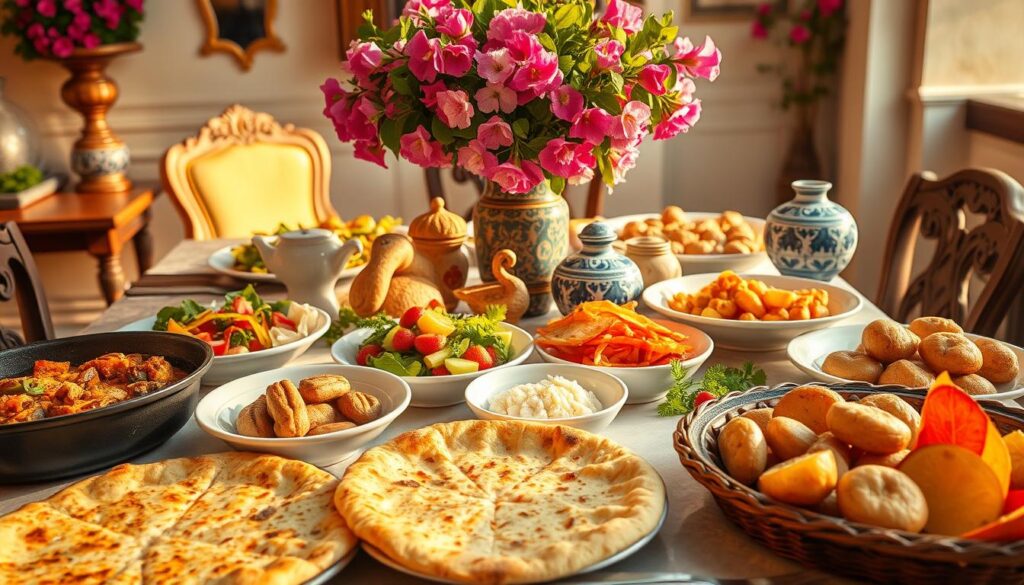
Pasta Dishes in Maltese Culture
Maltese cooking features a diverse array of traditional pasta dishes that embody the rich culinary heritage of Malta. Among these, Timpana and Ravioli with Spinach and Ricotta stand out as beloved options, each offering a unique taste of local flavors. These dishes highlight the importance of pasta in Maltese meals, showcasing not just comfort but also the country’s cultural influences.
Timpana: A Comforting Baked Dish
Timpana is a hearty baked pasta dish recognized for its combination of ingredients that create a truly comforting experience. This traditional dish typically uses 500 grams of penne or rigatoni pasta, enveloped in a golden, crispy pastry. Incorporating a blend of 800 grams of minced pork and beef, along with 360 ml of tomato sauce, enhances the flavor profile. The preparation involves simmering the meat sauce for around one hour, ensuring rich flavors develop fully.
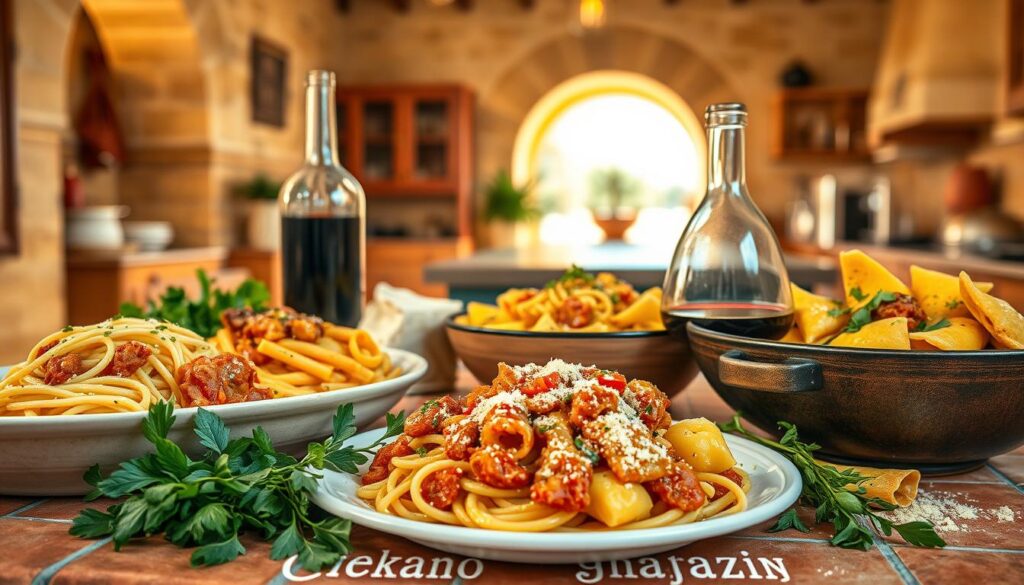
The baking process takes approximately 45 minutes at 180°C (350°F), with the last few minutes dedicated to achieving a crunchy top layer, a cherished preference among many Maltese families. Often, Timpana is made for family gatherings, showing its role in bringing people together over a plate of satisfying comfort food.
Ravioli with Spinach and Ricotta
Ravioli with Spinach and Ricotta showcases the Italian influence on Maltese cuisine. This dish features ravioli filled with a delightful mixture of fresh spinach and creamy ricotta cheese, making it a light yet satisfying option. Typically served with a simple tomato sauce, this dish highlights fresh ingredients, frequently available from local markets, emphasizing the essence of maltese cooking.
These traditional pasta dishes serve not just as meals but as a testament to the cultural history and communal spirit of Malta. Enjoying Timpana and Ravioli offers a way to connect with the island’s culinary roots while savoring delicious flavors crafted with care.
Seafood Specialties of Malta
Maltese seafood holds a special place in the heart of Malta dining, showcasing the island’s rich maritime bounty. Freshness is a dominant aspect, as local fishermen bring in their daily catches, ensuring that seafood dishes remain vibrant and flavorful. The seasonal availability of fish enhances the dining experience, providing different specialties throughout the year, each with unique flavors and textures.
Lampuki Pie: A Fishy Favorite
Lampuki pie, often made with the prized lampuki fish, represents one of the best examples of maltese seafood. This delicious dish features succulent fish mixed with vegetables and encased in a perfectly flaky pastry. The lampuki fishing season, which lasts from August to December, highlights the importance of this fish in local cuisine. Each bite of lampuki pie brings forth fresh flavors and a delightful crunch, making it a must-try for anyone exploring Malta dining.
Aljotta: A Hearty Fish Soup
Aljotta is another quintessential maltese seafood dish that exemplifies the island’s culinary heritage. This hearty fish soup is made using a base of garlic, tomatoes, and herbs, delivering a warm and comforting experience. Aljotta reflects the flavors of Malta’s coastal regions, with local fishermen often providing the freshest catch for the recipe. You will find this soup to be not only filling but also a wonderful introduction to the rich flavors of the sea that Malta has to offer.

Maltese Bread and Baked Goods
When you explore Malta’s culinary traditions, you cannot overlook the vital role of maltese bread and various baked goods. These staples not only grace the dinner tables of locals but also express the island’s rich history and cultural exchanges. Each type of bread tells a story of traditions passed down through generations, showcasing local ingredients and baking processes that are central to Malta’s food culture.
Ħobż Malti: The Traditional Maltese Bread
Ħobż Malti, the traditional Maltese sourdough bread, stands out for its thick crust and soft interior. This beloved loaf is often enjoyed with a drizzle of olive oil, accompanied by slices of fresh tomatoes, making for a delightful snack or an essential part of lunch. This exquisite bread reflects the deep-rooted malta culinary traditions, offering a flavor that resonates with locals and visitors alike.
Ftira: The National Flatbread
Another iconic bread is Ftira, a round flatbread featuring a hole in the middle. Traditionally, it serves as the base for various toppings, from fresh vegetables to savory fillings. Often enjoyed during gatherings, Ftira is a testament to Malta’s community spirit, where sharing delicious baked goods forms the heart of culinary celebrations.
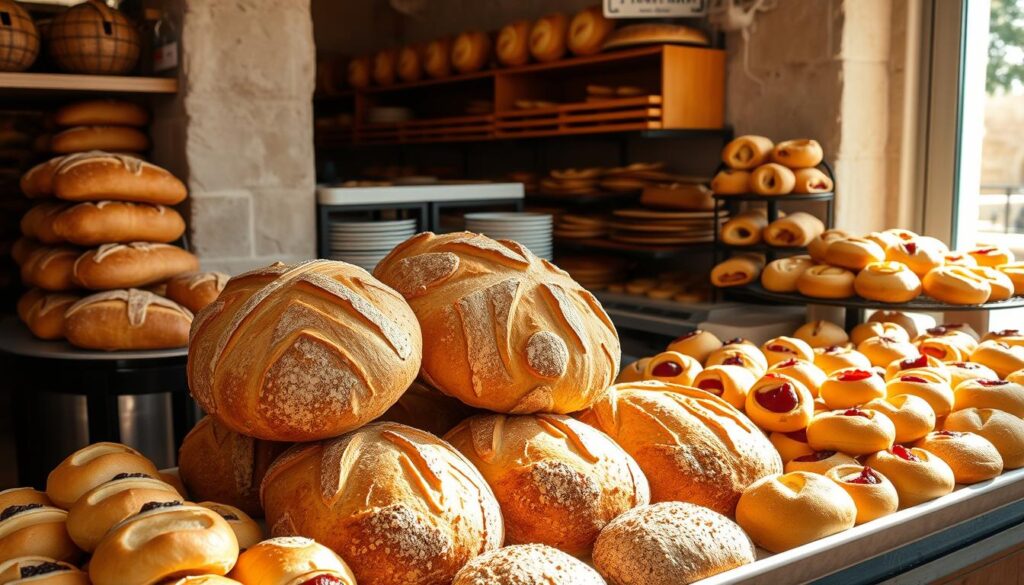
| Bread Type | Description | Common Pairings |
|---|---|---|
| Ħobż Malti | A thick-crusted sourdough bread, soft on the inside. | Olive oil, fresh tomatoes |
| Ftira | A round flatbread with a hole, topped with various ingredients. | Vegetables, tuna, olives |
| Pastizzi | A flaky pastry filled with ricotta or curried peas. | Served hot, often paired with coffee |
The prominence of maltese bread and baked goods in local cuisine highlights the nation’s culinary diversity and reflects historical influences. From community gatherings to family meals, these cherished items connect people through shared experiences, creating a lasting bond steeped in tradition.
Popular Maltese Desserts
Maltese desserts showcase the island’s rich culinary heritage, blending local and foreign influences into a delightful array of sweet treats. You can find an enticing variety of maltese sweets, characterized by unique flavors and textures, all scaling from delicious pastries to delightful puddings. Here are two standout desserts that every visitor should try.
Imqaret: Sweet Date Pastries
Imqaret are iconic maltese desserts, made of diamond-shaped pastries filled with a rich date filling, seasoned with citrus and spices. Traditionally deep-fried, these treats are often found at village feasts, showcasing their cultural significance and widespread popularity among the Maltese people. The blend of flavors makes them irresistible.
Kannoli: A Creamy Delight
Kannoli, adapted from Italian tradition, are another beloved choice among maltese sweets. These crispy pastry shells are generously filled with sweet ricotta cheese, sometimes accented with lemon zest, nuts, or chocolate. You’ll often find these treats in local bakeries and cafes, making them a staple in Maltese culinary culture.

Local Wines and Beverages
Maltese culture is deeply rooted in the production of unique wines and local beverages that reflect the island’s agricultural heritage. As you explore Malta, you will find a delightful selection of maltese wines crafted from indigenous grape varieties like Gellewza and Girgentina. These wines not only showcase the island’s rich viticultural history but also reveal the commitment to quality that local winemakers uphold.
Exploring Maltese Wine Varieties
The winemaking tradition in Malta dates back nearly 3,000 years, ensuring a diverse array of offerings. Today, you can savor different styles of maltese wines, which include both red and white variations that boast distinct flavors and body. Some of the notable grape varieties cultivated here include:
| Grape Variety | Type of Wine | Tasting Notes |
|---|---|---|
| Gellewza | Red | Fruity with floral notes |
| Girgentina | White | Crisp and aromatic |
| Chardonnay | White | Rich and buttery |
| Merlot | Red | Soft with a velvety finish |
The local consumption patterns significantly limit the availability of these maltese wines for export, adding to their exclusivity. Many visitors are surprised to find local wines available in UK supermarkets, indicating an emerging presence in international markets.
Kinnie: The Unique Maltese Soft Drink
No exploration of local beverages is complete without mentioning Kinnie, a highly popular Maltese soft drink that offers a distinctive bittersweet flavor profile. Made primarily from the fruit of the myrtle-leaved orange tree, along with a blend of herbs, Kinnie represents a true taste of Malta. You can enjoy it chilled or as a refreshing mixer, making it a staple at local gatherings and summertime events.
In addition to Kinnie, you might come across other local beverages such as Cisk Lager Beer, first brewed in 1929, or unique liqueurs like Bajtra, distilled from prickly pears. Each drink adds another layer to Malta’s rich culinary tapestry, inviting you to savor every moment spent on the islands.

Dining Etiquette in Malta
Dining in Malta offers a wonderful blend of flavors and customs, reflecting the rich cultural tapestry of the island. Embracing malta dining etiquette enhances your experience, allowing for a deeper connection with the local cuisine. Traditional dining often involves communal meals, making sharing a key aspect of enjoying food in this beautiful Mediterranean locale.
Understanding Traditional Dining Practices
The typical sequence of a Maltese meal mirrors Italian customs, starting with a delicious starter followed by pasta, the main dish, and concluding with dessert. Opting for reservations is advisable, especially on weekends when top restaurants are bustling with diners. Expect to engage in conversations with servers, who may enthusiastically discuss how a dish is prepared. This openness is part of the island’s culinary tradition, so don’t be surprised by the candidness.
Tips for Enjoying a Maltese Meal
When dining out, be mindful that many locals prefer generously sized portions, often referred to as “Americana type huge.” Requesting to see the fresh fish before ordering is common practice; not being offered this option can be viewed negatively. The phrase “xi trid?” or “what do you want?” exemplifies the straightforward communication style typical of Maltese servers, which visitors might find a bit abrupt at first.
To enhance your dining experience, feel free to compliment the management when you receive your bill. This gesture can lead to a complimentary drink, showcasing the hospitality that Maltese people are known for. A customary 10 percent tip is appreciated, as gratuity is not usually included in the bill and servers rely on these tips to supplement their wages.

Street Food Culture in Malta
Maltese street food offers a colorful glimpse into the local culture, blending tradition with affordability. The variety available makes it an exciting culinary adventure for anyone visiting Malta. Iconic dishes like pastizzi and ftira highlight the region’s rich food heritage, while vibrant food markets showcase these delights amid lively atmospheres. You can immerse yourself in Malta’s unique street food culture while enjoying delicious meals at reasonable prices.
Must-Try Street Food Delights
- Pastizzi: These flaky pastries filled with ricotta or mushy peas represent a staple snack for many. Found in numerous pastizzerias, they are affordable and utterly satisfying.
- Ftira: This traditional flatbread is often stuffed with ingredients like tuna, olives, and tomatoes, making it a popular choice for lunch. It’s not just tasty; it’s also recognized as part of UNESCO’s Intangible Cultural Heritage.
- Maltese Sausage (Zalzett tal-Malti): A versatile protein source, it can be enjoyed on its own or as part of various dishes, reflecting the rich culinary traditions of rural communities.
- Imqaret: Sweet date pastries that provide a delightful finish to any street food adventure. Their unique flavor captures the essence of Malta’s diverse dessert offerings.
Popular Markets to Explore
Malta’s food markets are vibrant hubs for tasting the best of maltese street food. You might want to visit:
- Valletta Street Market: A must-visit for a mix of local goods and delicious bites.
- Marsaxlokk Fish Market: Famous for its seafood, this market offers a beautiful setting to sample fresh dishes and experience local life.
- The Merkanti Maltese Street Food stand: Known for its variety, this stall serves some of the best ftira in the area.

Conclusion: Savoring the Flavors of Malta
Embarking on your maltese food journey can be an unforgettable experience filled with rich flavors and diverse culinary traditions. As you plan your adventure through Malta, take time to appreciate the history behind each dish, reflecting the island’s vibrant cultural tapestry shaped by influences from Arabic, Italian, Spanish, and French cuisines. This journey through the heart of Malta will not only tantalize your taste buds but also provide insight into the communal and festive spirit that defines Maltese dining.
Planning Your Culinary Journey
To fully immerse yourself in enjoying Malta cuisine, consider visiting local eateries that serve traditional dishes, such as fenkata and lampuki pie. Timing your trip to coincide with local feasts can enhance your experience, as festivals often feature special meals and vibrant atmospheres. Don’t miss the chance to explore the bustling street markets, which showcase an array of seasonal fruits, vegetables, and local delicacies, inviting you to engage all your senses in the rich food culture of the island.
Final Tips for Enjoying Maltese Cuisine
As you indulge in the delights that Malta has to offer, remember that communal dining is central to the experience. Sharing large platters around the table celebrates the local customs, fostering a sense of togetherness. Be sure to try popular desserts like kannoli and imqaret as you savor your meals, leaving no stone unturned in your maltese food journey. Each dish tells a story, and by embracing these culinary adventures, you’ll gain a deeper appreciation for the amazing flavors of Maltese cuisine destined to linger in your memory long after your visit.
